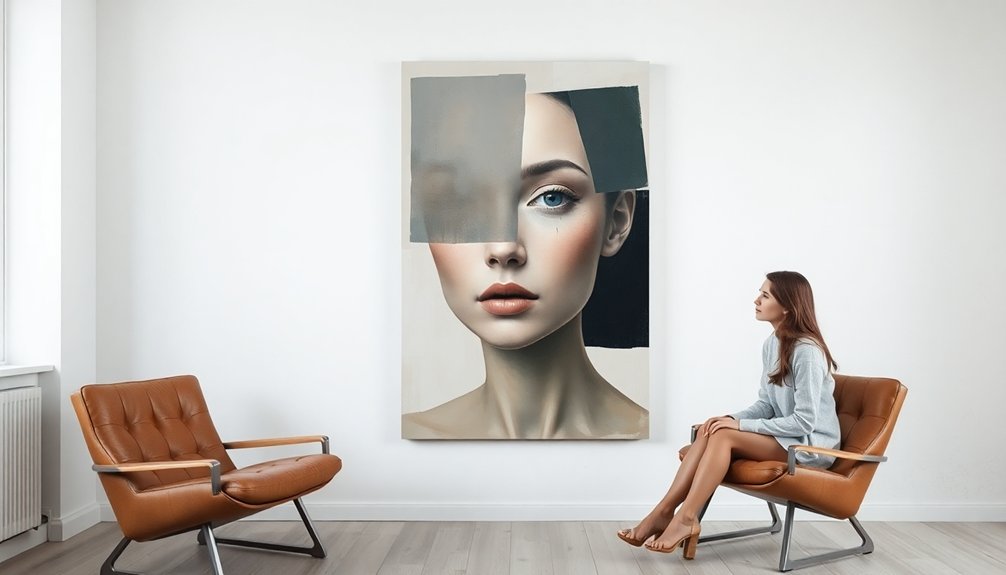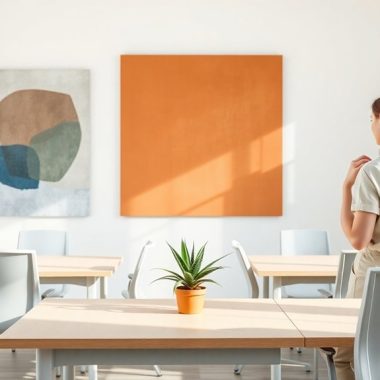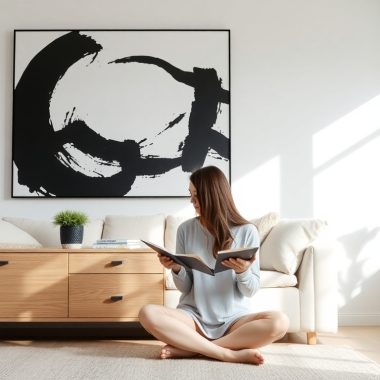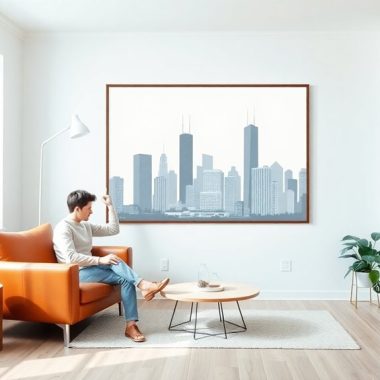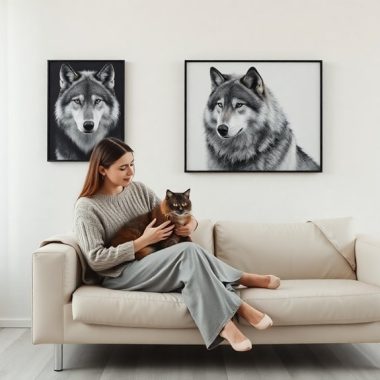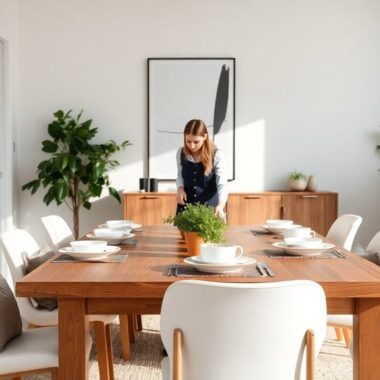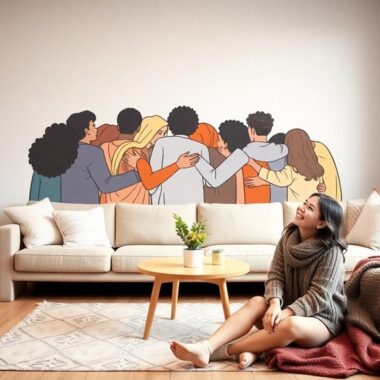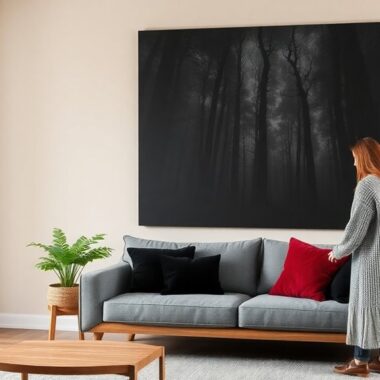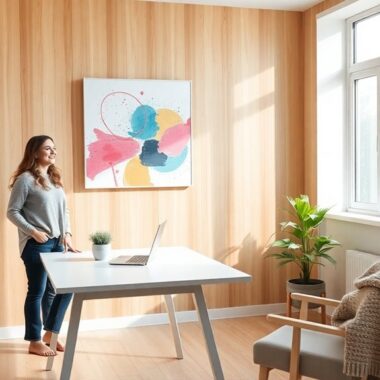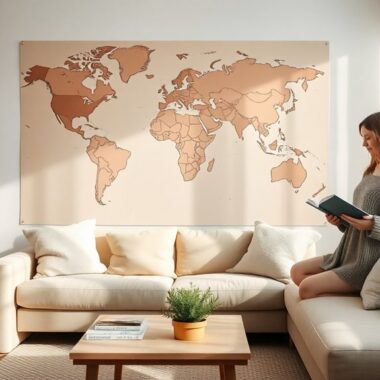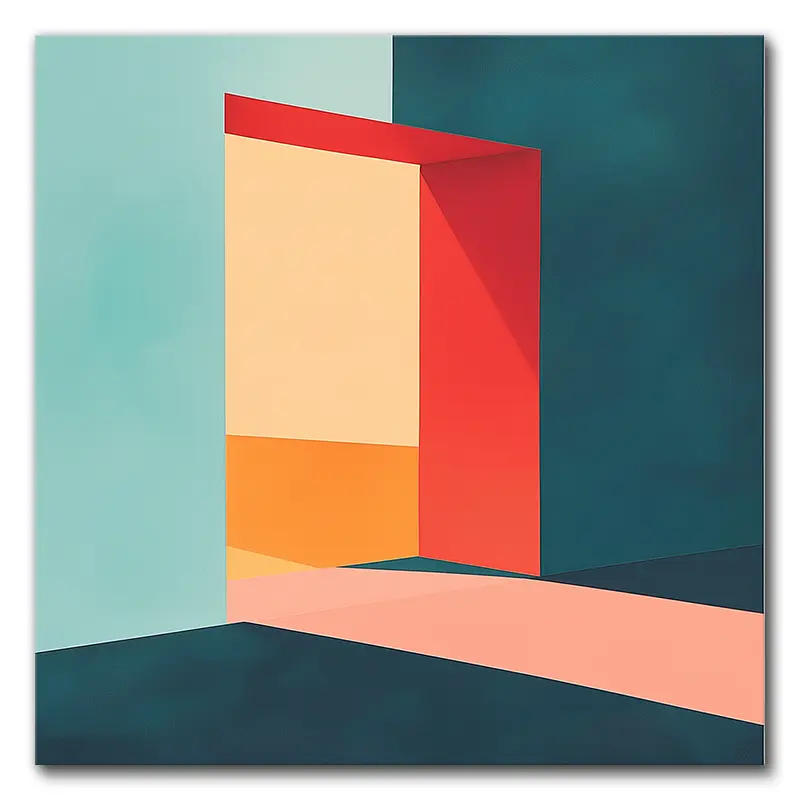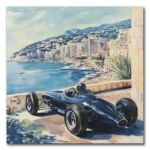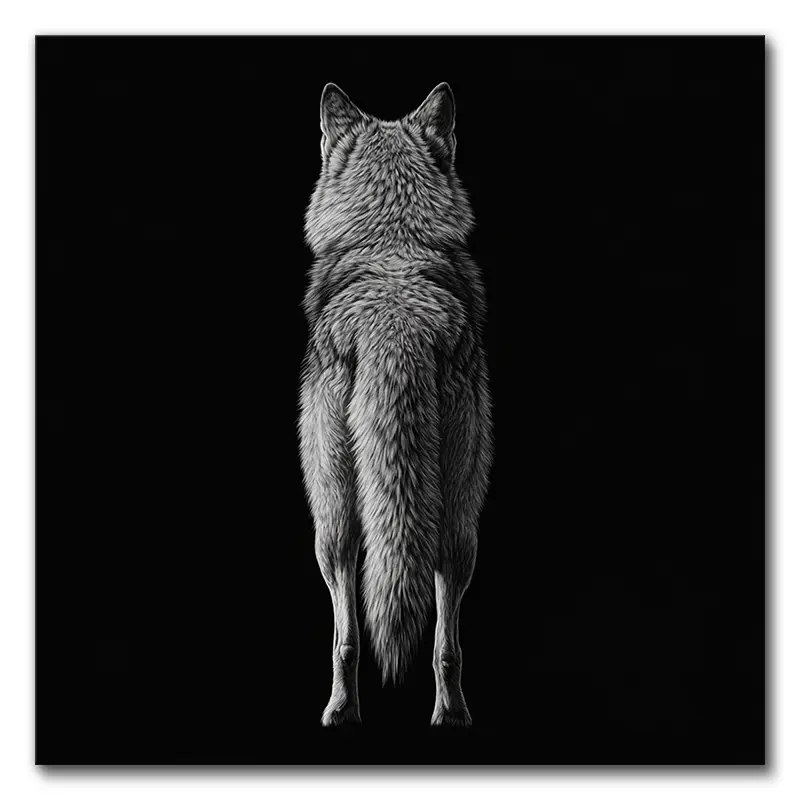Over 70% of art enthusiasts report experiencing profound emotional connections with abstract portraiture. You might not realize how these enigmatic artworks can transform your living space, challenging traditional representations of human experience. By fragmenting familiar forms and reimagining emotional landscapes, abstract portraits invite you to explore beyond surface-level perception. What secrets lie hidden in the swirling colors and fractured lines? These compelling visual narratives promise to reveal intimate dimensions of human expression that conventional art forms can’t capture, beckoning you to unravel their complex visual language.
The Origins of Abstract Portraiture
In the early 20th century, abstract portraiture emerged as a revolutionary artistic movement that challenged traditional representational art. Artists like Pablo Picasso, Wassily Kandinsky, and Georges Braque were sick and tired of painting people exactly as they looked. They wanted to capture something deeper – the raw emotion, the internal landscape of human experience that standard portraits couldn’t touch.
Historical influences played a massive role in this artistic rebellion. The rise of photography meant artists no longer needed to create photorealistic representations. Instead, they could deconstruct human forms, slice them into geometric shapes, and rebuild them in ways that revealed psychological truths. Cultural significance became about expressing inner turmoil, societal tensions, and individual complexity.
You might think abstract portraits are just random splashes of color, but they’re way more sophisticated than that. These artists were fundamentally saying, “Screw exact facial features – we’re going to show you who a person really is.” They fragmented human forms, used wild color palettes, and distorted perspectives to communicate something far more profound than a simple likeness.
Cubism, expressionism, and surrealism became the playgrounds where these artists experimented. They weren’t just painting faces; they were dissecting human experiences, pulling apart emotional states, and reconstructing identity in radical, mind-bending ways.
Abstract portraiture wasn’t just an art style – it was a full-blown philosophical statement about perception, identity, and the complex nature of human existence. This shift toward abstraction was also influenced by the classification of art into various genres, which allowed for a broader interpretation and appreciation of different artistic expressions.
Emotional Landscapes in Visual Form
Abstract portraits aren’t just visual representations; they’re emotional blueprints that map the intricate terrain of human feeling. When you look at these artworks, you’re not just seeing shapes and colors—you’re experiencing a raw, unfiltered landscape of human emotion that transcends traditional portraiture.
Emotional resonance isn’t some fancy art world buzzword; it’s the heart-pounding, gut-wrenching core of abstract portrait art. These pieces capture feelings that words can’t touch. They’ll slam you with visual storytelling that’s more powerful than a thousand therapy sessions.
Imagine a canvas where anger looks like jagged crimson lines slashing through midnight blue, or where melancholy appears as soft, dissolving gray waves that seem to whisper personal secrets.
Each brush stroke is a psychological fingerprint, revealing complex inner worlds that most people desperately try to hide. The artist doesn’t just paint a face; they dissect human experience, laying bare the messy, complicated emotions we all carry.
You’ll find yourself staring, mesmerized, as abstract lines and colors communicate something impossibly intimate—a vulnerability that traditional portraits could never achieve.
These visual landscapes challenge you to see beyond surface-level representation. They demand that you feel, not just observe. They’ll make you uncomfortable, spark internal dialogues, and potentially reveal parts of yourself you’ve kept carefully tucked away.
And isn’t that the damn point of art? To make you think, feel, and question everything you thought you knew about human experience. Each artwork invites introspection and beauty into personal spaces, transforming walls into storytelling canvases that reflect our innermost thoughts and emotions.
Breaking Traditional Representational Boundaries
Beyond the rigid confines of traditional portraiture, abstract art shatters representational expectations, liberating the human form from literal constraints. You’re no longer bound by photographic precision or anatomical accuracy. Instead, you’re diving into nonlinear narratives that challenge how you perceive identity exploration through visual expression.
When you look at abstract portrait wall art, you’re not just seeing a face—you’re experiencing an emotional landscape transformed into color, shape, and dynamic energy. These pieces deconstruct traditional boundaries, breaking down human features into raw, elemental fragments that communicate deeper psychological truths than any realistic rendering ever could.
Imagine fragmented lines that twist and intersect, representing the complex layers of human experience. You’ll find portraits that don’t just depict a person, but reveal inner emotional states through explosive color palettes and fractured geometric forms.
These artworks fundamentally say, “Screw conventional representation—we’re going to show you something more authentic.”
The beauty of this artistic approach lies in its rebellious spirit. It’s not about capturing exact physical likeness, but about translating personal essence into a visual language that speaks directly to your subconscious. Each brushstroke, each abstract shape becomes a potent symbol of individual complexity. Additionally, they often blend classic elegance with modern flair to create an extraordinary statement in any space.
Colors and Textures of Inner Life
Emotional landscapes pulse through abstract portrait wall art, transforming inner psychological terrain into vibrant chromatic experiences. You’ll discover that these artworks aren’t just paintings; they’re raw emotional maps revealing the complex layers of human experience through color symbolism and texture contrast.
When you immerse yourself in abstract portraits, you’ll encounter a language beyond words where each brushstroke speaks volumes about hidden emotions. The artwork becomes a mirror reflecting your deepest internal narratives, challenging traditional representational boundaries.
Here’s what makes abstract portrait wall art so compelling:
- Emotional intensity expressed through unexpected color combinations
- Layered textures that represent psychological complexity
- Non-linear storytelling through visual metaphors
- Transformative visual experiences that provoke personal reflection
Imagine a canvas where crimson might represent rage, while deep blues suggest melancholy. The textures aren’t just paint—they’re lived experiences compressed into visual poetry. Rough, jagged lines could symbolize internal struggles, while smooth gradients might represent moments of peace.
These portraits don’t just hang on walls; they breathe, pulsate, and communicate in ways traditional art can’t. They’re provocative conversations about identity, vulnerability, and the messy, beautiful complexity of human emotions. The emotional impact of artworks, such as purple wall art, can further enhance these experiences by inviting a sense of calm while sparking inspiration.
You’ll find yourself lost in these abstract landscapes, discovering parts of yourself you didn’t know existed. Each glance reveals something new—a hidden emotion, a suppressed memory, a forgotten dream. Abstract portrait wall art doesn’t just decorate; it transforms.
Psychological Dimensions of Fragmented Faces
Fragmented faces in portrait wall art deconstruct human identity into powerful visual narratives, revealing psychological complexity through deliberate disruption. When you look at these abstract portraits, you’re not just seeing a face—you’re witnessing a deep psychological landscape where identity shatters like a broken mirror.
These artworks challenge your perception by presenting faces that aren’t whole, but intentionally fractured. They’ll force you to confront how identity isn’t a fixed thing, but a dynamic, messy construct. Each fragment represents a different emotional state, a different memory, a different version of self. It’s like your psyche has been exploded and reassembled in a way that’s both jarring and profoundly intimate.
The psychological interpretation of these fragmented faces is wild. You’ll see pieces that represent vulnerability, rage, confusion, and hope—all coexisting in one visual space. It’s a mind-bending exploration of how we’re not just one thing, but a complicated mix of experiences and emotions.
Artists who create these portraits aren’t just making pretty pictures; they’re psychological mapmakers. They’re breaking down the traditional boundaries of portraiture and showing you that human identity is fluid, complex, and never straightforward. Each brushstroke, each torn edge, each misaligned feature tells a story about inner turmoil and resilience. Additionally, the use of color in these artworks can also evoke specific emotions, enhancing the overall impact of the piece by influencing how viewers perceive emotional states within the fragmented identity.
Modern Techniques and Artistic Approaches
Contemporary abstract portrait wall art has exploded with innovative techniques that deconstruct traditional representational methods. You’ll find artists today pushing boundaries like never before, transforming human faces into stunning visual experiences that challenge perception.
Digital manipulation has become a game-changer in this artistic domain. When you explore modern abstract portraiture, you’ll encounter techniques that blend technology and creativity in mind-blowing ways. Consider these approaches:
- Pixelated deconstruction of facial features
- Layered digital rendering with fragmented color palettes
- Machine learning-generated facial reconstructions
- Augmented reality portrait interactions
Expressive brushwork continues to play a vital role in contemporary abstract portraiture. Artists aren’t just painting faces anymore; they’re dissecting emotional landscapes through bold strokes and unexpected color choices.
You’ll see portraits that scream raw emotion, where each brush mark tells a complex narrative about human complexity. The most exciting developments come from artists who refuse to be constrained by traditional representation.
They’re weaponizing visual ambiguity, creating pieces that morph and shift depending on viewer perspective. Some works might look like chaotic color explosions from one angle, then reveal intricate facial structures when viewed differently.
Technology and artistic imagination are colliding in ways that’ll blow your mind. Digital tools now allow artists to deconstruct, reimagine, and reconstruct human faces with unprecedented freedom. This evolution in art reflects the growing popularity of digital art, making it more accessible and appealing to a wider audience.
You’re witnessing a revolution in visual storytelling, where abstract portraits aren’t just art—they’re powerful emotional statements that transcend conventional representation.
Selecting the Perfect Abstract Portrait
C:\Users\34663\Desktop\zimmwriter\output\Abstract_Portrait_Wall_Art_That_Speaks_Louder_Than_Words_0004.jpg
At the intersection of personal taste and artistic expression, choosing the perfect abstract portrait requires careful consideration of several key factors. You’ll want to dig deep and understand what makes a piece truly speak to your soul.
Composition techniques play a vital role in selecting an abstract portrait that’ll rock your wall. Look for dynamic lines, unexpected color palettes, and asymmetrical arrangements that challenge traditional portraiture. Your artwork should punch you in the gut with emotional resonance, making you feel something visceral and raw.
When hunting for the right piece, consider the mood you’re aiming to create. Are you looking for something that screams rebellion, whispers melancholy, or roars with unbridled passion? Each abstract portrait carries its own emotional DNA, and you’ll want to find one that matches your vibe.
Size matters too, so measure your space before falling in love with a piece. A massive canvas can dominate a room, while smaller works can create intimate conversation points. Pro tip: don’t just buy something because it looks cool—make sure it fits your space and your personality.
Color harmony is essential. An abstract portrait should complement your existing decor without looking like it was randomly slapped onto the wall. Think about the underlying tones, the way light hits the piece, and how it’ll interact with your room’s aesthetic. Artworks from the Gold Wall Art collection can add a touch of luxury and warmth to your spaces.
Trust your gut. If a piece makes you stop, stare, and feel something—that’s your winner.
Transforming Spaces Through Emotional Art
Abstract portrait wall art isn’t just decoration—it’s a transformative portal that can fundamentally reshape emotional landscapes within living spaces. When you hang a powerful piece of emotional art, you’re not simply filling blank walls; you’re creating narrative experiences that pulse with raw, unfiltered energy.
Your living space becomes a canvas where artistic expression meets personal storytelling. These portraits aren’t just images—they’re emotional resonance made visual, capturing complex human experiences in striking, provocative ways. Each brushstroke and color choice communicates something deeper than words ever could.
Here’s how abstract portrait wall art transforms your environment:
- Creates immediate visual conversation starters that challenge traditional design norms
- Infuses rooms with unexpected emotional depth and psychological complexity
- Reflects personal identity through bold, unconventional artistic interpretations
- Breaks traditional decorative boundaries with provocative, boundary-pushing imagery
Imagine walking into a room where a haunting abstract portrait immediately captures your attention—its swirling colors and fragmented human form speaking volumes about human vulnerability and strength. These aren’t just paintings; they’re psychological landscapes that challenge viewers’ perceptions and invite intimate, sometimes uncomfortable introspection.
Your walls become more than passive backgrounds—they transform into dynamic storytelling platforms. Each abstract portrait carries its own emotional weight, inviting viewers to project their experiences, fears, and desires onto its mysterious surface. It’s like hanging a powerful, silent conversation that continuously evolves with every glance. Incorporating jet black wall art can enhance the overall aesthetic and emotional impact of these transformative pieces.
Personal Connection Beyond Literal Representation
C:\Users\34663\Desktop\zimmwriter\output\Abstract_Portrait_Wall_Art_That_Speaks_Louder_Than_Words_0005.jpg
When you move beyond photographic precision, abstract portrait wall art opens profound personal connections that traditional representational art can’t capture.
It’s like diving into the emotional landscape of identity exploration, where every brushstroke and color choice becomes a deeply intimate conversation between the artwork and your inner self.
Abstract portraits aren’t about capturing exact features; they’re about capturing essence. You’ll find that these pieces speak directly to your soul, transcending the limitations of literal representation.
The fragmented lines, unexpected color palettes, and distorted forms invite you to project your own experiences and emotions onto the canvas.
Imagine walking into a room and feeling an immediate emotional resonance with a piece that doesn’t show a recognizable face, but somehow completely understands you.
These artworks become mirrors of your complex, multi-layered identity – revealing parts of yourself you didn’t even know existed. They challenge you to look beyond surface-level perception and dig deeper into your psychological landscape.
The beauty of abstract portraiture lies in its ability to transform personal narratives into visual poetry.
Each piece becomes a unique dialogue, where the artist’s interpretation merges with your own subjective experience.
You’re not just observing art; you’re participating in its creation, filling the gaps with your memories, dreams, and unspoken emotions.
These aren’t just decorative pieces – they’re portals to self-discovery, provocative conversations hanging on your wall that whisper, scream, and challenge everything you thought you knew about representation and personal expression. Furthermore, the integration of floral and botanical art can enhance the emotional depth and natural connection in your space.
Final Thoughts
You’ve discovered more than art—you’ve opened emotional portals that shatter traditional representation! Abstract portraits aren’t just images; they’re raw, thunderous expressions of human complexity. Each fragmented face screams volumes louder than any spoken language, transforming blank walls into explosive landscapes of unfiltered feeling. Dive fearlessly into these visual symphonies and let your soul dance with the infinite possibilities of interpretation. At VerVeLush, we curate these transformative abstract portraits with expert precision, offering canvas prints that not only capture emotional landscapes but bring them vibrantly to life in your personal space. Our carefully selected collection ensures that every wall becomes a thunderous canvas of human expression, ready to resonate with your deepest artistic sensibilities.

